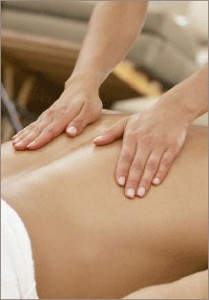Tui Na – Chinese Massage
 Tui Na has a long history and dates back to ancient times, as early as 2700 B.C.
Tui Na has a long history and dates back to ancient times, as early as 2700 B.C.
Based on the traditional principles of in Oriental Medicine, Tui Na [meaning push-and-grasp] is a form of medical massage. Like acupuncture, both treats and prevents disease by applying manual pressure acupuncture points to remove blocks in the energy pathways of the body and promoting an increase in the body’s Qi and blood.
Tui Na has a variety of techniques that work to improve blood circulation, reduce the displacement of joints, enhance joint mobility, heal soft tissue injuries, improve the functions of the internal organs, regulate the nerves and flush cellular tissues.
Myofascile Release Therapy
Trauma, inflammation and surgeries can create restriction and pain in the myofascial tissue of the body. Myofascial Release Therapy is a soft tissue therapy for the treatment of those restrictions and pain. The release technique utilizes pressure and stretching to relax the contracted muscles and thus improve circulation of blood and lymph. Sustained pressure or compression can be applied to the area affected to release the constrictions. The patient is then advised in proper body movement, exercise and self-treatment to sustain the correction in the affected area.
Kappos
As students of the Kototama Institute each class was taught Kappos. Sensei Nakazono was a 9th Don Akido Master. All Akido masters learned Kappos or resuscitation techniques. If a person was injured in Akido there were techniques to treat the injury.
Kappo techniques involve stimulation of acupuncture points, realignment of joints, revival of someone who has choked, alleviation of pain from a kick, release of a seized diaphragm, stopping bleeding and setting a broken bones. Kappos are a type of Japanese First Aid.
Dr. Duckworth uses Kappos for chronic and acute injuries and pain. It is a soft tissue therapy that alleviates many conditions.
